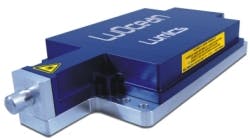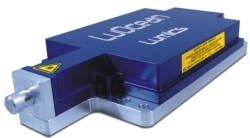Winbro Group Technologies' combination machines used to machine turbine blades
Combination machines from Winbro Group Technologies, Coalville, Leicestershire, UK, are used when machining turbine blades and vanes to ensure cooling holes are produced, despite the presence of a thermal coating barrier, said an Aug. 17 article in The Engineer.
The concept of a combination machine, incorporating for example both high speed drilling EDM and laser ablation, provides a solution for machining operations on high pressure turbine blades and vanes. The complex and intricate patterns of cooling holes required on these parts are fundamental in satisfying the demands for reduced noise emissions and increased fuel efficiency on the latest generation engines, such as those used to power the Airbus A350 and Boeing’s 787 Dreamliner.
As the turbine blades and vanes on these engines run at high temperatures that often exceed the melting point of their material, they not only require round and shaped cooling holes but the surface is further protected by a thermal barrier coating (TBC), typically ceramic. This non-conductive coating is not conducive to the EDM process, therefore alternative production methods of producing the cooling features need to be considered, according to The Engineer.
In many cases it is possible to drill through this ceramic coating and continue to generate the cooling hole using a high peak power pulsed laser. This, option however, can have an impact on hole quality in terms of the heat affected zone, recast layer and micro-cracking, especially in the rotating turbine blades, which in turn could result in a failure to meet the stringent criteria laid down for components of this type.
Winbro's solution is to first remove the TBC and the adjoining bond coating at the hole location using laser ablation. This exposes the parent material, allowing the hole to be made using high speed drilling EDM. Drilling the metering hole using Winbro’s signature analysis eliminates the need for a back wall impingement stopping material, required when drilling by laser. This dual process not only ensures hole quality but the minimum of TBC is removed, without risk of de-lamination of the TBC around the through-hole.
Combining the two processes within a single machine brings additional benefits, as there are no alignment issues when switching between the two different operations; and the ablation laser can also be used, not only to remove the TBC in a controlled manner, but also to machine a complete diffuser 2D or 3D shape, according to The Engineer.

